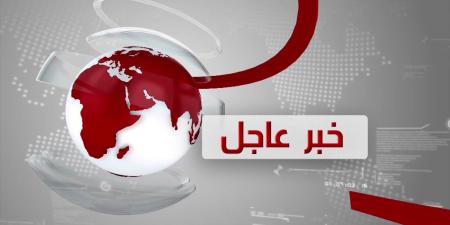نعرض لكم زوارنا أهم وأحدث الأخبار فى المقال الاتي:
5 Warning Signs of High Cholesterol in the Body - المصدر 7, اليوم السبت 15 نوفمبر 2025 12:35 مساءً
المصدر 7 - High cholesterol is often called a silent killer — not because it causes immediate symptoms, but because it quietly damages the body over time. Many people live for years without knowing their cholesterol is too high, increasing their risk of heart disease, stroke, and artery blockages.
But while high cholesterol doesn’t always show obvious signs, the body does send subtle warnings that something isn’t right. Understanding these clues can help you take action early and protect your heart before serious complications develop.
Here are five important warning signs that may indicate high cholesterol levels.
1. Chest Pain or Discomfort — A Sign of Restricted Blood Flow
One of the most serious signs of high cholesterol is chest pain. Cholesterol buildup narrows the arteries, making it harder for oxygen-rich blood to reach the heart.
What the pain feels like:
Tightness
Pressure
Squeezing sensation
Burning or heaviness
Pain radiating to the neck, jaw, or arm
Why this happens:
High cholesterol leads to plaque buildup in the arteries.
When blood flow is restricted:
The heart doesn’t get enough oxygen
This causes discomfort or pain (angina)
It increases the risk of a heart attack
When to seek help:
If chest pain appears during physical activity or stress and improves with rest, it may be a sign of angina — a warning that your arteries are narrowing.
2. Fatty Deposits Around the Eyes (Xanthelasma)
Xanthelasma are small, yellowish cholesterol deposits that appear on or around the eyelids.
While they are painless, they are a noticeable sign of high cholesterol.
How they look:
Soft, yellow bumps
Usually near the inner corners of the eyes
May appear on both upper and lower eyelids
Why they appear:
Excess cholesterol circulates in the blood and can accumulate under the skin.
Important note:
Not everyone with xanthelasma has high cholesterol — but it’s common enough that doctors often recommend a blood test when these bumps appear.
Why this matters:
Xanthelasma may indicate:
High LDL cholesterol
High triglycerides
Increased risk of heart problems
3. Leg Pain or Numbness — Poor Circulation in the Lower Body
High cholesterol can also affect circulation in the legs.
When plaque buildup narrows the arteries supplying the legs, a condition called peripheral artery disease (PAD) can develop.
Symptoms include:
Leg pain when walking
Cramping in calves or thighs
Cold feet
Numbness or tingling
Slow healing wounds on the legs
Why this happens:
Restricted blood flow prevents muscles from receiving enough oxygen — especially during activity.
When to be concerned:
If leg pain improves with rest but returns when walking, it may be due to poor circulation caused by high cholesterol.
4. High Blood Pressure — A Common Side Effect of Artery Narrowing
Many people don’t realize that high cholesterol and high blood pressure are closely linked.
Why:
Cholesterol buildup narrows the arteries
Narrow arteries create resistance
The heart must pump harder to push blood through
This results in elevated blood pressure, which can be both a symptom and a consequence of high cholesterol.
Warning signs of high blood pressure:
Headaches
Dizziness
Fatigue
Vision problems
Shortness of breath
Important:
High blood pressure rarely shows clear symptoms — so regular monitoring is essential.
5. Numbness, Tingling, or Weakness — A Warning Sign of Reduced Blood Flow
When cholesterol blocks arteries, blood flow decreases — not just to the heart, but also to the brain and limbs.
Symptoms include:
Tingling in hands or feet
Numbness in the limbs
Weakness on one side of the body
Feeling cold in extremities
Why this matters:
Reduced blood flow means:
Nerves don’t receive enough oxygen
Muscles weaken
The risk of stroke increases
When to seek immediate help:
Sudden numbness or weakness — especially on one side — may indicate a stroke and requires emergency care.
???? Bonus: Hidden Signs of High Cholesterol
Other subtle warnings include:
Slow wound healing
Fatigue or constant tiredness
Shortness of breath
Digestive discomfort after eating fatty meals
Erectile dysfunction (reduced blood flow)
These may not always be caused by high cholesterol, but they often appear alongside artery problems.
???? What to Do If You Suspect High Cholesterol
If you notice any of these symptoms:
Schedule a blood test
Reduce saturated fats and trans fats
Increase fiber-rich foods
Exercise regularly
Consider medication if recommended by a doctor
Stop smoking
Maintain a healthy weight
Early detection can prevent heart attacks, strokes, and life-threatening artery blockages.














0 تعليق